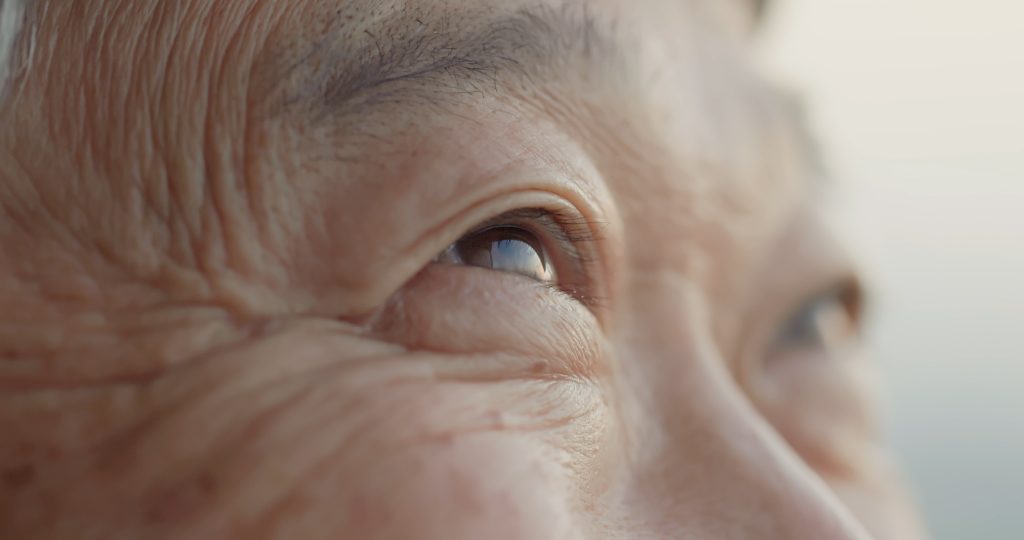Media Advisory
Friday, July 26, 2024
Research Reveals Cellular Pathology of “Dry” AMD.
what
Researchers at the National Institutes of Health (NIH) have discovered the cause of a malfunction in the process by which cells in the eye’s retina remove waste products.
The report, from scientists at NIH and Johns Hopkins University in Baltimore, details how changes in a factor called AKT2 affect the function of cellular organelles called lysosomes, producing deposits called drusen in the retina. Drusen are a hallmark of dry age-related macular degeneration (AMD). According to the researchers, the findings suggest that drusen formation is a downstream effect of AKT2-related lysosomal dysfunction, pointing to a new target for therapeutic intervention.
Lysosomes are like cellular garbage dumps and play a vital role in maintaining the light-sensing retina of the eye. The main cells that make up the retinal pigment epithelium (RPE) supply oxygen and nutrients to the actively working neurons of the retina. They also collect and process retinal waste products through lysosomes. When cells’ ability to process waste products decreases, drusen form. As AMD progresses, the number and volume of drusen increase. However, despite extensive research, the formation of drusen remains largely mysterious.
The researchers manipulated AKT2 expression levels in the RPE of mice. When AKT2 was overexpressed, lysosomes lost their normal function and the mice developed dry AMD symptoms, including RPE degeneration. The researchers observed similar characteristics in RPE cells from human donors with AMD, or in RPE cells generated from the patients’ stem cells. Cells from donors with a genetic mutation called CFH Y402H, which increases AMD risk, had relatively high expression of AKT2, defective lysosomal function, and formed drusen deposits.
The findings of this study provide the basis for future treatments for dry AMD, for which there is currently no cure. AMD is one of the most common causes of vision loss in the U.S. Patients with dry AMD develop drusen in the area of the light-sensing retina called the macula, which is used to provide sharp central vision.
This study builds on previous work published by Dr. Ruchi Sharma from NEI’s Department of Ocular Stem Cell and Translational Research, who developed a stem cell-derived RPE model from AMD patients ( Sharma et al., 2021 ).
Who
Dr. Kapil Bharti and Dr. Ruchi Sharma are co-directors of the Ocular Stem Cell and Translational Research (OSCTR) section within the NIH National Eye Institute Intramural Research Program.
article
Ghosh S, Sharma R, et al. AKT2/SIRT5/TFEB pathway as a potential therapeutic target for non-neovascular AMD. Nat Commun. 2024 Jul 21;15(1):6150. doi: 10.1038/s41467-024-50500-z.
Sharma R, et al. Epithelial phenotype-restoring drugs suppress macular degeneration phenotypes in iPSC models. Nat Commun. 2021 Dec 15;12(1):7293. doi: 10.1038/s41467-021-27488-x.
This press release describes the results of basic research. Basic research advances our understanding of human behavior and biology and is the basis for the development of new and better ways to prevent, diagnose, and treat disease. Science is an unpredictable and incremental process. Each research advance builds on past discoveries and often comes in unexpected ways. Most clinical advances would not be possible without basic research knowledge. For more information about basic research, please visit: https://www.nih.gov/news-events/basic-research-digital-media-kit.
NEI leads the federal government’s efforts to eliminate vision loss and improve quality of life. Through vision research, we advance innovation, foster collaboration, expand the vision workforce, and educate the public and key stakeholders. NEI supports basic and clinical science programs aimed at developing sight-restoring treatments and expanding opportunities for people with vision loss. For more information, visit: Translation: https://www.nei.nih.gov.
About the National Institutes of Health (NIH):NIH is the nation’s medical research agency, comprised of 27 Institutes and Centers, and is part of the U.S. Department of Health and Human Services. NIH is the primary federal agency conducting and supporting basic, clinical, and translational medical research, investigating the causes, treatments, and cures for both common and rare diseases. For more information about NIH and its programs, visit: Click here for details.
NIH…Transforming Discovery into Health®


